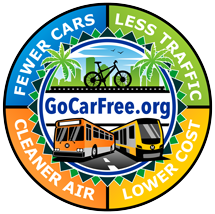
Lesson 6
From Car Addicted to Car Free: My Story
By Chris Balish, Founder and Executive Director of GoCarFree.org
“Don’t even consider keeping up with the Joneses. They’re broke!”
– Dave Ramsey, best-selling author of The Total Money Makeover
The point of this lesson is to demonstrate that almost anyone – from corporate executives to students to teachers to bar and restaurant workers – can go from driving fifteen thousand miles a year to seldom, if ever, driving at all, and be happier, healthier, and much wealthier.
I’m living proof that even hard-core car addicts can change their ways – to the enormous benefit of their bank account, their health, and their quality of life. Here’s my story.
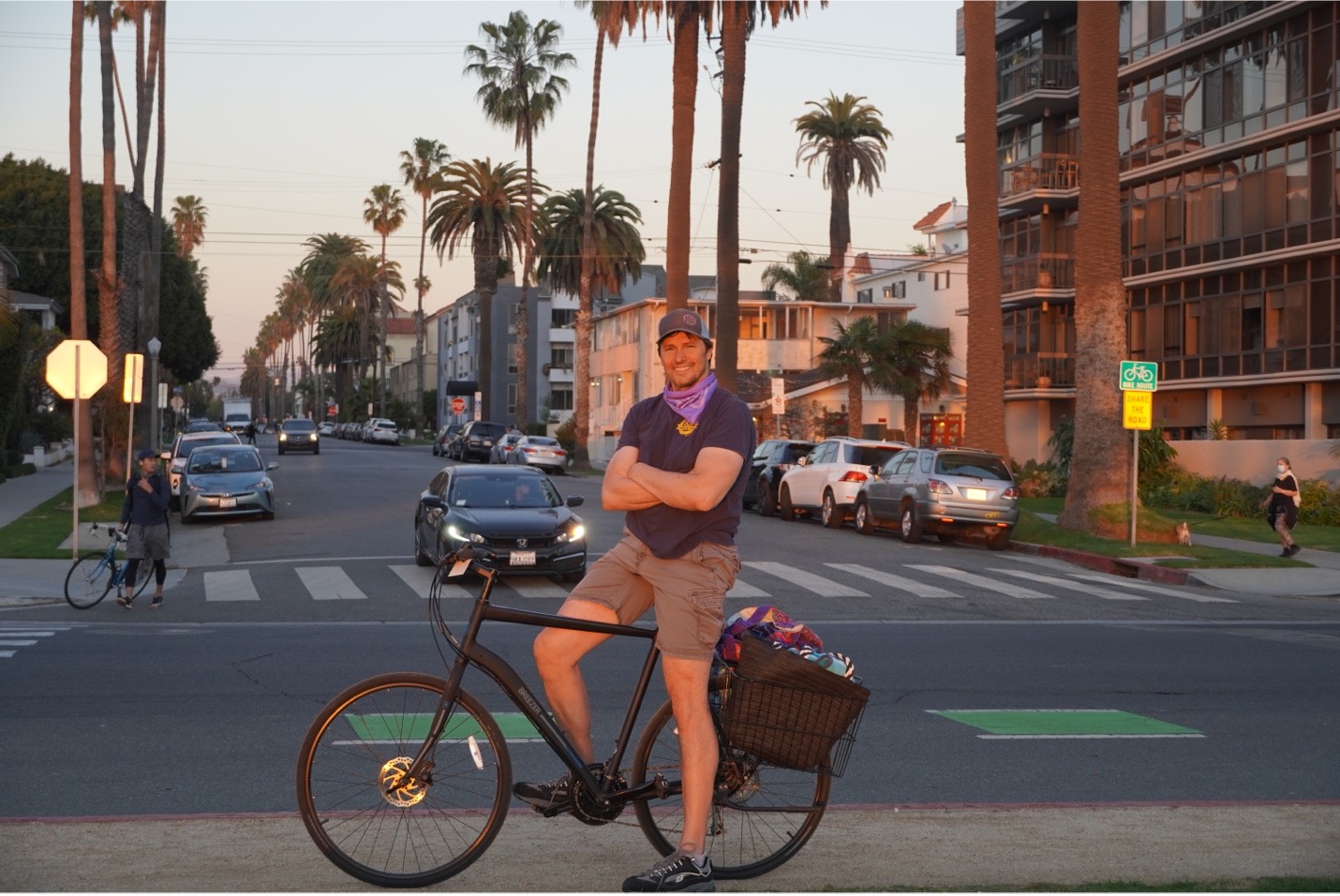
Who Is Chris Balish?
Even though I’m the founder and executive director of GoCarFree.org, an organization that promotes reducing car use, I am not an activist against fossil fuels, a climate protester, or an anti-capitalist. Of course, I believe in saving the environment and the planet, but I am as mainstream as you can get.
I work a nine-to-five job in an office building. I commute to work. I wear suits. I go out on dates with my wife. I go to bars, sporting events, parties, concerts, and festivals. I eat meat. I don’t buy hemp or tofu, and I don’t live in a free-love commune. In fact, I am married with two young daughters. I live in a large two-bedroom apartment in Santa Monica, California, one block from the beach – which I can afford because I don’t have to pay for a car.
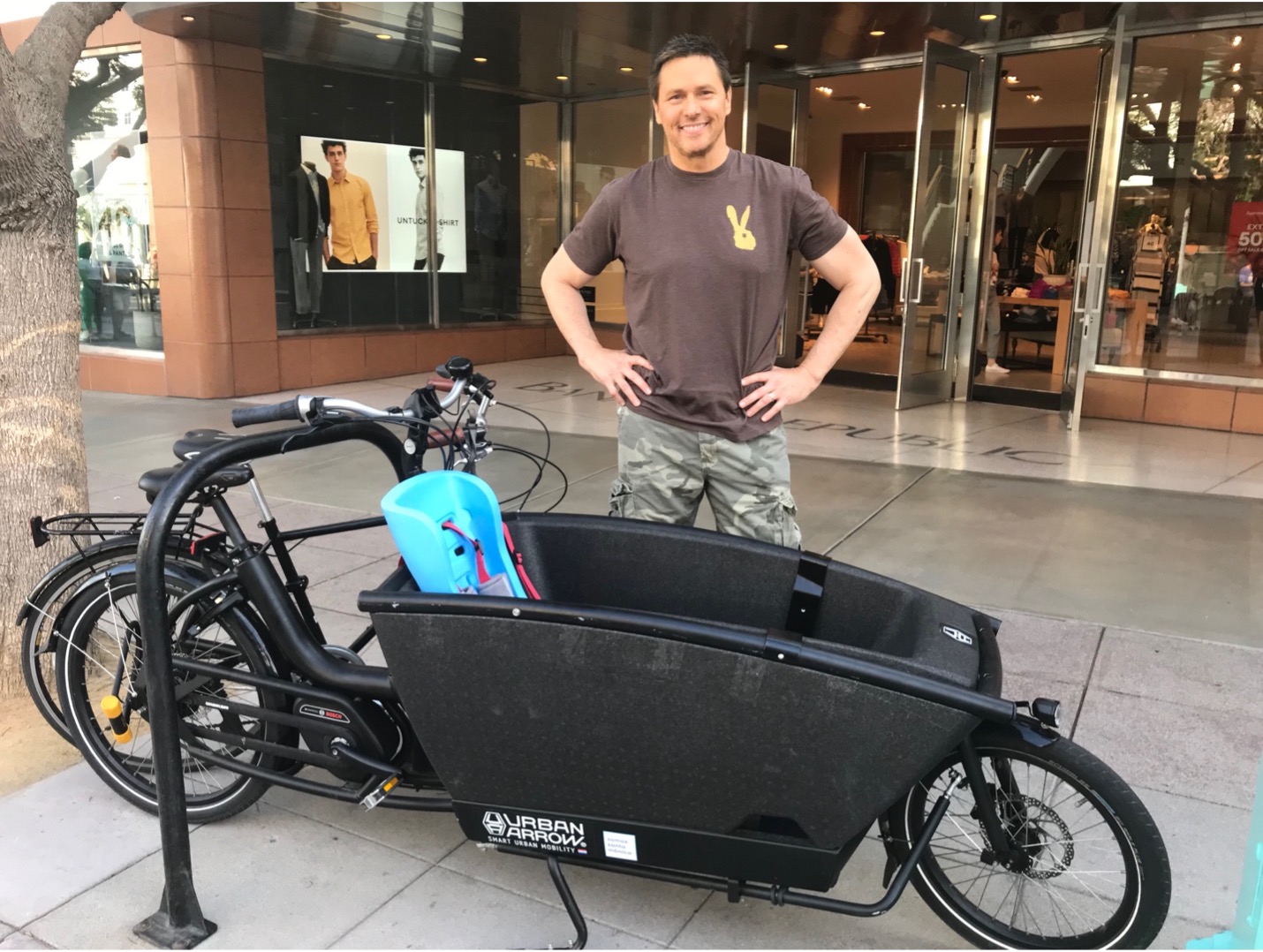
Image Is Everything . . . or Is It?
Let’s go back a few years. Before I moved to the Los Angeles area, I was living in St. Louis, Missouri, and working full-time as a TV news anchor for NBC station KSDK-TV News Channel 5.
Back then I was driving a shiny new $30,000 SUV. It was a dark green Toyota Sequoia with a big V8 engine, power everything, and enough seats to fit all my friends. I loved that thing, and I kept it immaculate. It was expensive, but I thought my status as a TV news anchorman necessitated an impressive ride and a flashy image. So I paid the price.

Although I didn’t know how dearly I was paying at the time, because I never sat down to run the numbers. What was important to me was that everyone thought I was successful.
I was also driving about fifteen thousand miles a year. I drove to work, to the supermarket, to the big box stores, to the dry cleaner, to the gym, and about twice a week to the gas station. Whenever I needed anything, I just hopped in the SUV and sped off. Sale on shoes at the mall? Off I’d go – whether I needed shoes or not. Late-night craving for chocolate chip ice cream? Hand me the keys and get out of my way. Met a cute woman who lived forty miles away? Hey, that’s what cars are for.
This lifestyle didn’t seem wasteful or extravagant to me at the time, because all my friends behaved the same way. It wasn’t unusual for one of my buddies to make three separate trips to Home Depot in a single day. Another friend would drive to the gym in the morning to do his cardio routine, then drive back to the same gym at night to lift weights. And the gym was less than a mile away.
Whatever whim we had could be satisfied by driving somewhere. It was the life we lived because it was the only life we really knew; each of us was the product of a car-centered, suburban upbringing. No doubt about it, we were hard-core autoholics. Car addicts. And we were just like most of the rest of America, addicted to our cars out of habit.
“It is possible to have too much of a good thing.”
– Aesop (c. 620–560 B.C.)

So there I was, rolling up to clubs and parties in my pride and joy, my main image-maker and status symbol – my car. It reflected the flashy façade I was trying hard to maintain – that I was successful and raking in the cash.
But that image was a lie.
I did have a decent income from my job. But like so many other Americans, I was spending it as fast as it came in – a little faster, actually. I was using credit cards to make up the difference. Though it appeared to all of my friends and dates that I was living the good life and rolling in the dough.
But on the inside, I was stressed out and worried about my financial future. I wasn’t saving any money. I wasn’t a homeowner. And my credit card balance kept creeping higher. I knew I had to find some way to radically improve my personal finances; I just didn’t know how.
Car Free Success Story:
I only work thirty hours per week in a very expensive place to live (Berkeley, California) in large part because I don’t own a car and I don’t have to pay for insurance, gas, maintenance, tolls, parking, etc. I couldn’t do it if I owned a car. I think people don’t realize how much cars actually cost in terms of both money and the time spent earning the money to pay for the car. My housemate was even willing to file for bankruptcy before he would give up his car, despite the fact that he lives with me and knows I get around just fine without one.
Accidentally Car free
Every time gas prices shot up, I felt acute pain in my wallet. The huge V8 engine in my Sequoia guzzled fuel so fast I thought there must be a leak in the gas tank. (There wasn’t.) So I decided to sell the SUV and downsize to something smaller and more fuel efficient, but still sexy and impressive.
I ran a classified ad in the Autotrader. Since gas prices were pretty high at the time, I predicted it would take at least a month to find a buyer, so I had not even begun to shop for a new car.
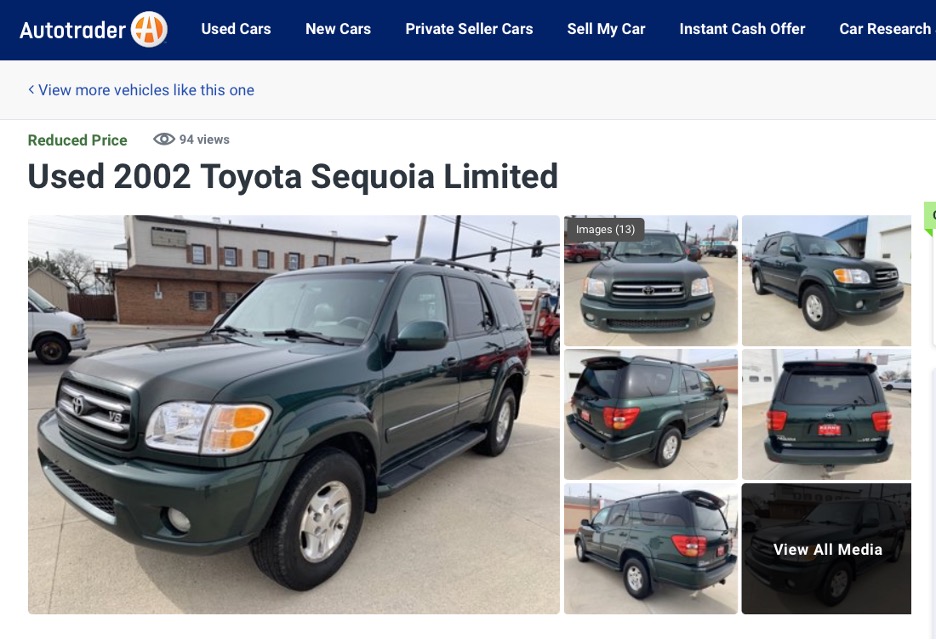
Needless to say, I was astonished when the very first person who came to look at my Sequoia purchased it on the spot. He gave me a cash deposit that day, and a cashier’s check for the remaining amount the next day.
I was glad the sale went smoothly. But for the first time in my adult life, I was without a car. And I was terrified!
How would I get to work? How would I get to the store? What would become of me!
Luckily, I sold the Sequoia on a Friday, so I had all weekend to figure out how I was going to get to work on Monday. But it didn’t take all weekend; it took about twenty minutes.
I got on the computer and typed the words “public transit” and “St. Louis” into Google. The first website that came up was MetroStLouis.org. I clicked on it and was taken to the home page of the mass transit system for the greater St. Louis area.
Can You Live Car free?
If you’ve read this far, chances are good that you are an excellent candidate for living car free or car lite. Tens of millions of Americans can do it, and I’m quite confident that probably includes you.
In the next lesson, I’ll walk you through my story and how I went from hopelessly car addicted to joyfully car free. You might be surprised to learn what 9-5 job I was working at the time I went car free. Hint: my hair had to be perfect.
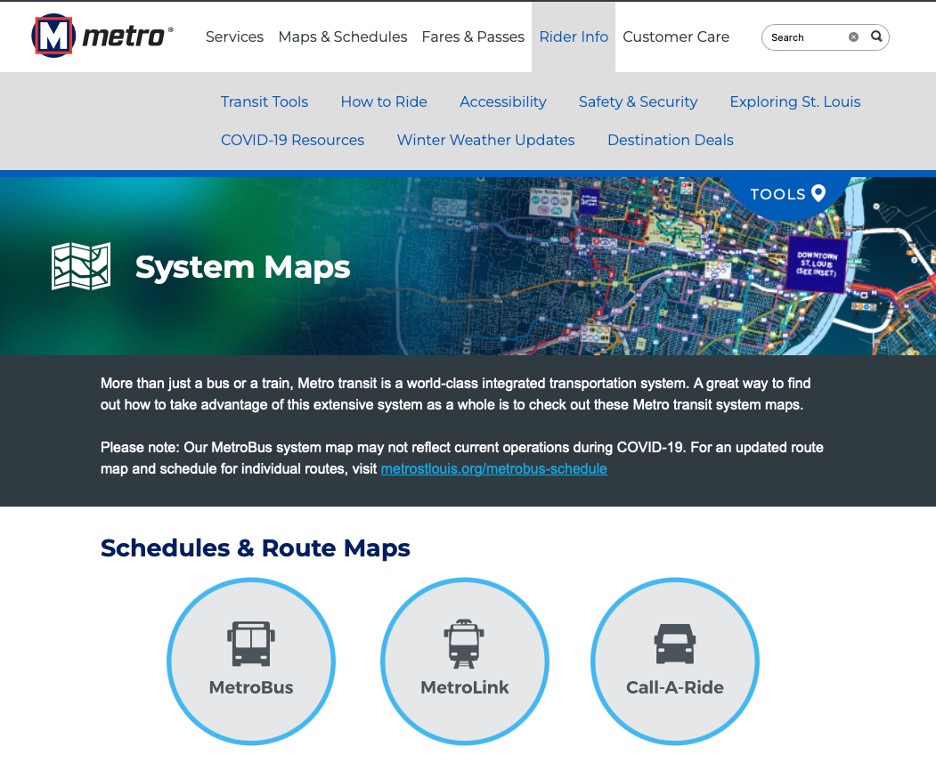
Then I clicked on the System Map tab. A few minutes later I located a transit stop about a quarter mile from my house. I was surprised, because I didn’t even know that stop was there, even though I’d driven by it hundreds of times. I guess I never looked.
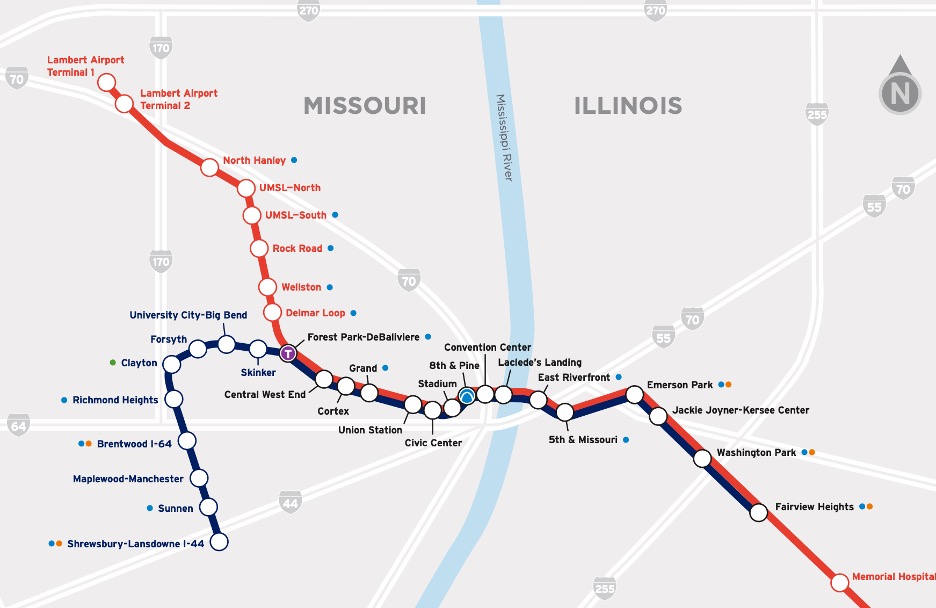
Since I had not ridden the metro system in St. Louis ever, I was nervous about it. On Sunday, I went for a trial run to see if I could get to work this way. Sure enough, it was simple, easy, convenient, air-conditioned, clean, safe, and on time. Plus, I brought a book with me and read it during the trip.
I was amazed at how well this worked.
Lotto Millionaire Doesn’t Own a Car
Garry McGivney won one of the largest New York Lotto jackpots ever. According to WROC-TV news, the NBC television affiliate in Rochester, despite his $56 million windfall, “This millionaire doesn’t even have a car. The retired 66-year-old state worker says he loves to walk and would probably just rent a car if he ever needed one.”
Learning to Live Without a Car
Over the next few weeks, I rode the metro to work every day. It took a little getting used to for a die-hard car addict like myself. But I didn’t have a single problem and I was never late to work.
As a bonus, my commute was now productive time – I could read, write, or work on my laptop. Plus, I didn’t have to sit in bumper-to-bumper traffic on a crowded expressway breathing exhaust fumes with stressed-out drivers road-raging at me. I told my coworkers at the TV station, “This is not a bad way to get to work. I could easily do this for a month or two until I buy a new car.”
What I had to figure out next was my non-work transportation – everything outside of getting to and from my job. How was I going to get to the gym, to my favorite restaurants, to the grocery store, to the post office, and all the other places I was used to driving in my car?
And what about going out to bars and parties with my friends? I was afraid that my social life was about to come to a screeching halt, and that I would starve to death because I couldn’t get to the supermarket.
I soon realized that all the little errands I used to do by driving around town, burning up gas, could easily be accomplished without ever setting foot in a car.
I found a grocery store that delivers right to my doorstep. I started buying household goods and clothing online. I found a neighborhood fitness club three blocks from my house. And I began doing all my banking online and through the mail. I even found a dry cleaner that would pick up and deliver my suits.
Car Free Success Story:
When I tell people I live car free most are somewhat incredulous – especially here in Pittsburgh. It’s such a car-centric town. But more people than I would have expected express a degree of envy that I can manage to live without a car. A lot of people tell me they can’t do it because they’re not fit enough, or because of where they live. So I’ve often biked to their houses on a route they often drive, just to prove it’s possible. Anyone can try the car free lifestyle. And I bet you’ll like it.
My Social Life
Now this part may be a little hard for you to believe, but I swear it’s true. After I sold my car, my social life actually improved. I was afraid that without wheels I’d be sitting home alone on Saturday nights eating bon-bons on the couch, instead of out having fun with my friends. It turns out that getting rid of my car resulted in my being more social and spending more time having fun with my friends, not less.
Here’s why. When I had a car and I needed to go somewhere – say to the mall or to Sam’s Club – I just drove there when it was convenient for me, usually right after work. This meant I drove there alone, shopped alone, and drove home alone. Plus, when I owned a car I was driving to and from work alone. Being a car addict is a solitary existence in many ways.
But after selling the car, trips to the mall or to Sam’s Club became group outings. My friends knew I didn’t have a car, so they’d say, “Dude, I’m going shopping on Saturday, you wanna go?” They drove, I paid for gas and treated them to lunch, we spent time together, it was perfect.
Going to baseball games or concerts at Busch Stadium, parties, bars, and nightclubs was also easy. Most places I could get to on my own via the metro. Or I would take a taxi, ride my bike, or just plan outings closer to home. Even when I had a car, going out to bars I always took a taxi because I knew I would have a few drinks and not want to drive home.

By the way, there was no Uber or Lyft back then. And taxis weren’t the most convenient. These days, modern ridesharing services make car free living incredibly easy.
This was an eye-opening period for me. I couldn’t believe a month had passed since I sold my car, yet I was still getting all my errands done and going to all the places I wanted to go. I was as socially active as ever, even though I didn’t have a car. For the first time in my life, the thought occurred to me, “Do I really even need a car?”
The End-of-the-Month Shocker
Of course, thirty years of brainwashing by automobile advertising still had a firm grip on my psyche. Secretly I was enjoying this car free experiment. But outwardly I told all my friends I was still shopping for a car. And, truth is, every time I saw a TV commercial showing a sexy sports car zooming down a deserted highway, I felt the lure of car ownership beckon.
Then my entire outlook on cars changed in a single moment. I was checking my bank balance online – as I did frequently in those days – when I saw a mistake on the computer screen. That couldn’t be right. How much? How could that possibly be? And there’s no minus sign in front of that balance.
I was so busy figuring out this living-without-a-car thing that I’d completely forgotten: no car payment this month! Not to mention no car insurance premium, no $40.00 fuel tank fill-ups twice a week, no $10.00 car washes, no $30.00 oil changes, no monthly parking fee, no Armor All or wheel cleaner to buy, and no parking tickets. My bank balance was $800 higher than usual at the end of the month. It was like Christmas!
Doing the Math I’d Never Done
The first thing I did was balance my checkbook, to make sure there was no mistake. Then I examined my bank and credit card statements from the past several months. Sure enough, the $800 that now resided in my bank account was the same amount I had been spending on my car every month. But I was a little confused because my car payment was nowhere near $800.
Then I realized a universal truth: every car – from luxury sedans to subcompacts, new or used – comes bundled with dozens and dozens of different expenses that siphon cash from your wallet faster than you can say “late fee.”
The care and feeding of an automobile is far more costly than I ever realized. I was actually angry with myself for never sitting down before this to figure out how much money I was wasting on my car every month.
That $800 windfall got me thinking. I wondered how much money I had spent on cars in the past ten years. I estimated that since college I had blown at least $70,000 on cars. If I had invested that money instead, and earned a return of 8 percent, I would have $106,000 in the bank. But since I spent all that cash on cars, I was broke.
Well, no use beating myself up over things I can’t change. I decided to look to the future. I calculated that if I stayed car free for a year it would be the equivalent of getting a $13,000 annual salary increase. I could pay off my credit card balances, establish a rainy-day fund, and start saving to buy a house.
And if I decided to remain car free permanently, I could pay off the mortgage and retire twenty-five years early. Hmmmmm . . .
Benefits Beyond the Financial
After looking at the hard numbers I decided to stretch out this no-car thing as long as possible. I still thought I’d end up buying a car eventually, but hey, why not rake in some easy cash for a few months?
As I continued to ride the metro to work (I had my laptop out the whole trip) and spend more time with my friends, little light bulbs kept turning on in my mind to illuminate even more benefits of car free living.
I noticed that I had more free time. I was debt free. I was saving money. I began to invest. I found it easier to relax. I was sleeping better. I had lost 15 pounds because I rarely ever ate fast food. I made new friends on my commute. And I was no longer staying late at the office because I was getting work done during my commute.
With many advantages to not owning a car, I kept postponing the purchase of a new one. Until one day I realized, I don’t want to own another car.
What I learned through this experience is that when you live car free not only do you save a ton of cash, but also your quality of life improves. It’s a win-win. And for me it was a no-brainer.
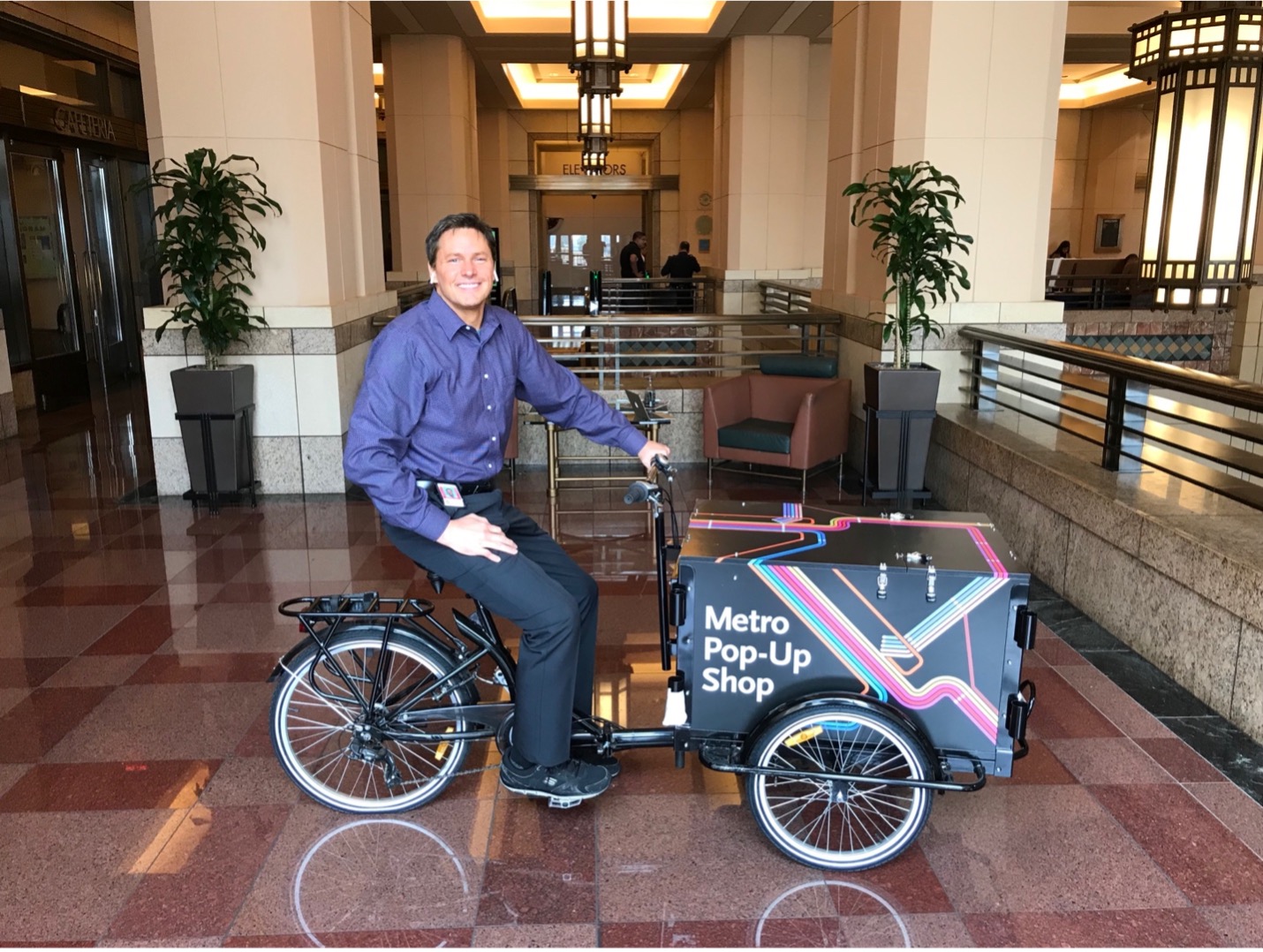
My Life Now
I first went car free more than fifteen years ago, and I’ve not owned a car since. I do occasionally rent cars for trips, and I use Uber and Lyft from time to time. But most of the miles I travel are on my bicycle, or on the Metro. Even in a huge, sprawling city like Los Angeles this works great.
Since I gave up owning a car I am now totally debt-free, I’m saving an amazing 50 percent of my income, and I’m on track to retire early. Plus, I live a more fulfilling life. I spend more time with my wife and daughters. And I still get everywhere I need to go with ease.
I am living proof that a car-addicted busy professional with a nine-to-five job really can go from driving fifteen thousand miles per year to rarely driving at all, and be much happier. Not to mention a heck of a lot richer.
